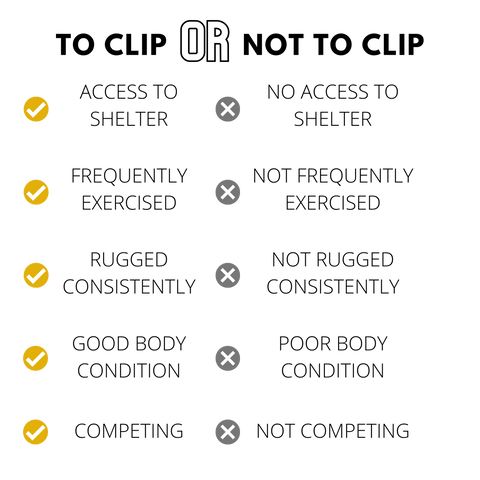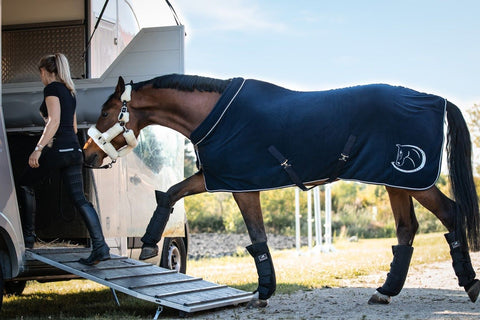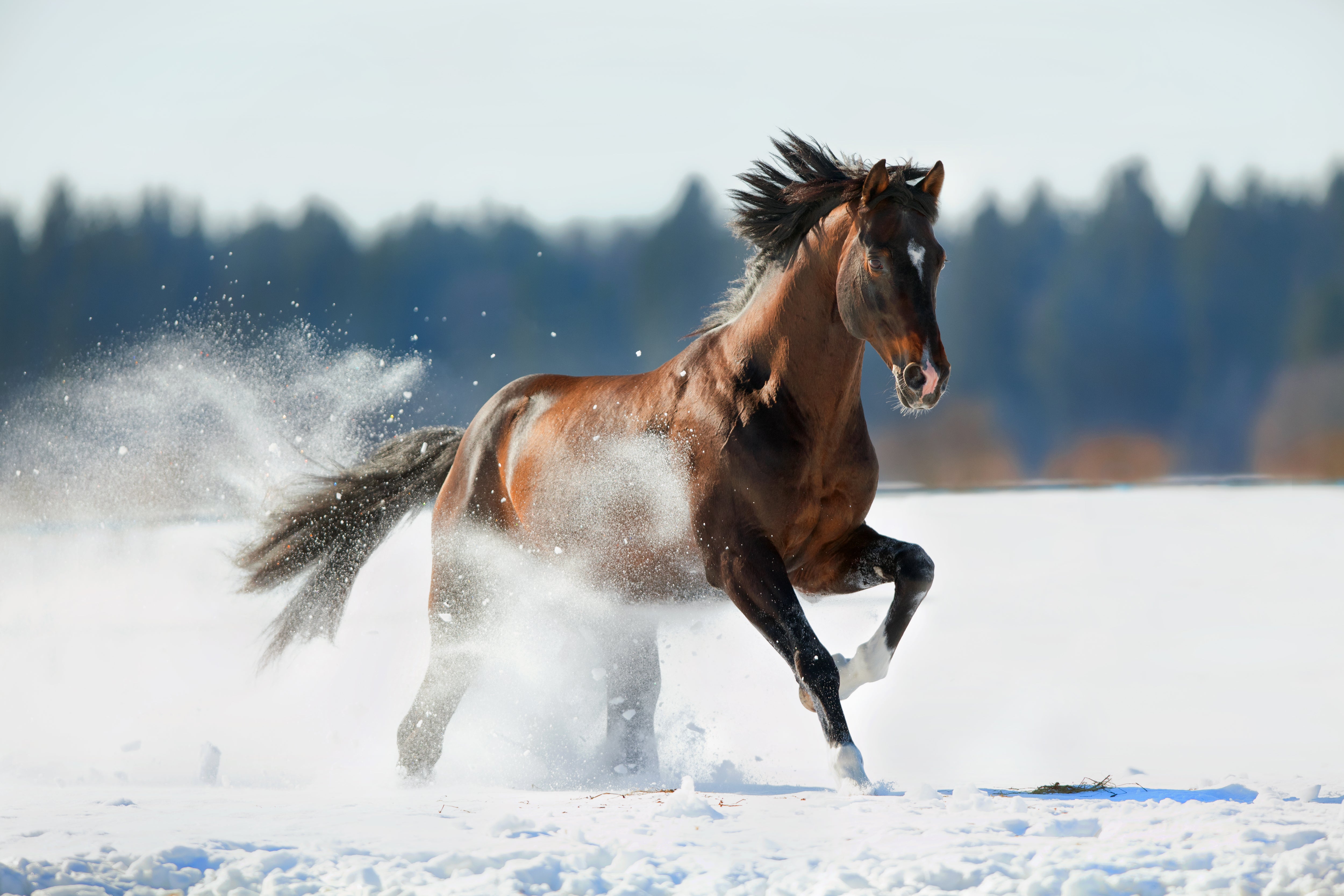WHY CLIP YOUR HORSE?
Clipping your horse minimises sweating when ridden. If a horse has a heavy, thick winter coat they can easily overheat whilst exercising. Clipping eliminates this problem and enables your horse to dry off more effectively as well as looking clean and tidy.
Putting a wet horse back in the paddock isn't great for their wellbeing. If a horse is regularly sweaty and needing to be hosed off, a clip would be much better for the horse's comfort. Especially for those who ride after work and put their horse back in the paddock the cold of the night as it will take an unclipped horse hours to dry.

WHEN IS THE BEST TIME TO CLIP YOUR HORSE?
The best time to clip is when you notice your horses winter coat coming through and they begin to excessively sweat when exercised. in Australia, the typical time to clip is mid-April when the days begin to get shorter. Depending on how quickly your horses coat grows they may need clipping every 6 weeks or so.
RUGGING GUIDE
Horses are extremely good at regulating their body temperature and have a much larger thermoneutral zone than humans, hence why we may feel cold but your horse feels perfectly comfortable. Horses thermoneutral zone is between 5°C and 25°C. It is much easier for a horse to warm up than cool down.
We recommend adding a light woollen rug to their usual rugging routine as this will replicate the horses winter coat. Wool is a natural fibre that promotes breathability. This will allow your horses skin to breathe and avoid overheating.

WHAT SHOULD YOUR CLIPPED HORSE WEAR IN THE FLOAT?
When floating people don't realise how quickly the float heats up with the horse's standing body temperature even on the coldest of days. We recommend replicating the horses natural coat warmth with a light woollen rug.

PROS AND CONS OF CLIPPING YOUR HORSE

POPULAR CLIP STYLES FOR HORSES
There are so many different clip styles, which is why it is important to choose a clip that is best suited to your horses situation. The most common clip styles are:
- Full body – this clip removes hair from the entire body. Suited to show horses and horses in heavy, consistent work.
- Hunter clip – this clip is most commonly seen on event horses where the legs and saddle pad area is left.
- Blanket clip – this clip leaves the hair on the legs and hind quarter area keeping the loins and back warm. This clip is great for horses in medium to heavy work.
- Trace clip – this clip is similar to the blanket clip except the hair along the top half of the neck is left. This clip is great for horses in light work, and is commonly seen on ponies.




Share:
FLOODWATERS TO THE LIMELIGHT
TOP FIVE SAFETY TIPS FOR TOWING A HORSE FLOAT